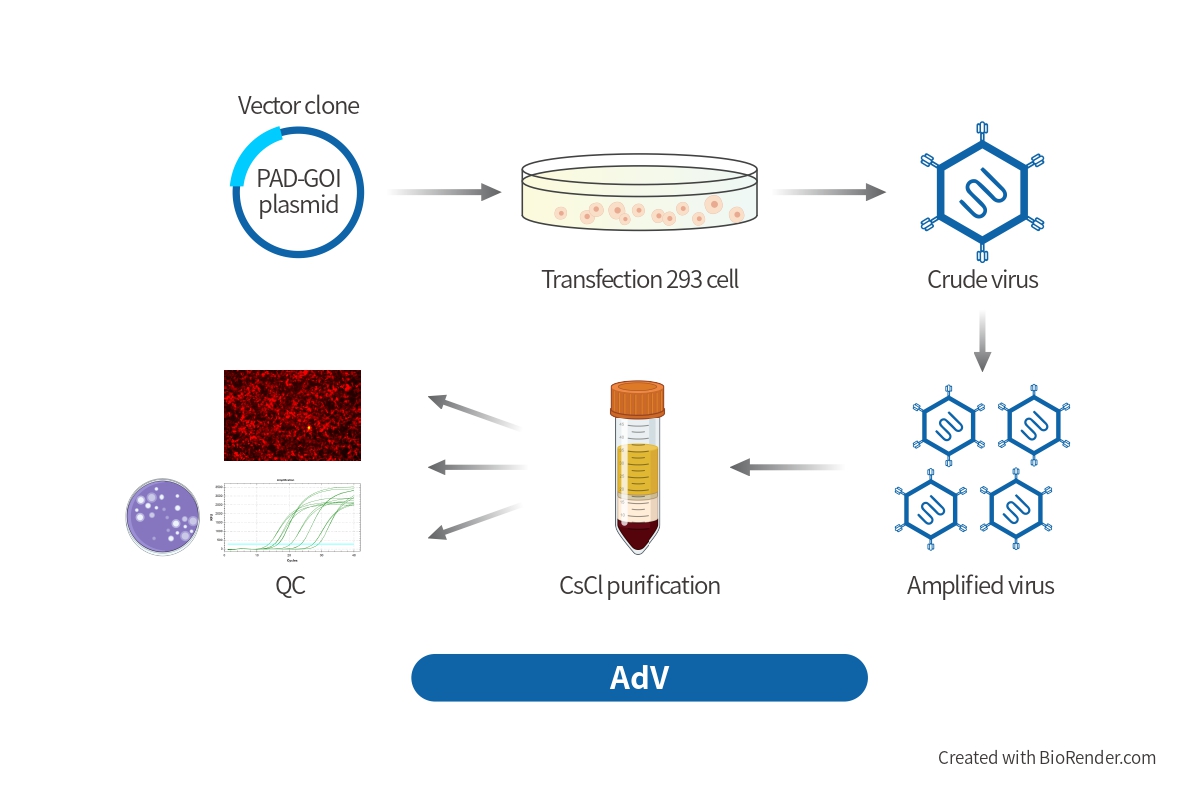MicroRNA Service Workflow
| Project Discussion | Contract Confirmation | Vector Construction | AAV/Lentivirus/AdV Production | Delivery |
|---|---|---|---|---|
| miRNA NCBI# | Subcloning into appropriate vectors | Fast delive | Report | |
| Specific need | Competitive price | Plsamids and virus particle |
MiRNAs over-expression Service
A region of about 500bp encompassing miRNA precusor (pre-miRNA) and flanking sequences will be cloned in suitable vector, or packaged into AAV, lentivirus and adenovirus for efficient gene delivery. Upon efficient delivery of vector, the cellular machinery will process the expression of miRNA precursor into mature miRNA, and the over-expression of miRNA will be achieved.
MiRNA Sponge Service
MiRNA sponge is a RNA molecule with 4 tandem mature miRNA antisense oligonucleotide binding sequences that can sequester miRNAs from their endogenous target mRNAs, to achieve down-regulating miRNA purpose. Combine with AAV, lentivirus and adenovirus to realize efficient knock-down miRNA in vivo and vitro.
MiRNA Services FAQs
-
1. I want to over-express microRNA, should I use precursor or a mature?
Precursors were used for microRNA over-expression.
-
2. For MiRNA Sponge, should I use precursor or a mature ?
4 tandem mature miRNA antisense oligonucleotide binding sequences will be used for MiRNA Sponge
References
- Bing Xie et al. The roles of miR-592-3p and its target gene, TMEFF1, in the nucleus accumbens during the incubation of morphine craving. Int J Neuropsychopharmacol. 2022.
- Stefano Caramuta .Stockholm Clinical and functional aspects of microRNA regulation in human cancers.
- Chen et al.Silencing of microRNA-708 promotes cell growth and epithelial-to-mesenchymal transition by activating the SPHK2/AKT/β-catenin pathway in gliomaCell Death and Disease 2019.
- Tongbin Li et al.MicroRNAs: Mechanisms, Functions and Progress .sciencedirect.2012.






















